A nuisance with consequences
- 6 out of 10 workers suffer from hearing fatigue at work.
- Noise can cause irritability, aggression and even depression.
- It affects reading comprehension, speech understanding, concentration, attention and memory.
- 6 million French workers lose more than 30 minutes a day due to noise at work (Ifop-JNA survey).
- It increases the risk of cardiovascular problems.
- Exposure to noise during the day has a negative impact on sleep quality.
How does sound work?
Sound is a vibration that travels as a wave through air and solid objects.
Several physical phenomena affect the propagation of this wave in a room:
- Diffusion: the wave travels in a straight line through the air.
- Reflection: the wave bounces off a surface.
- Transmission: the wave passes through a wall.
- Diffraction: the wave passes under a door.
- Absorption: the wave is trapped by a material.
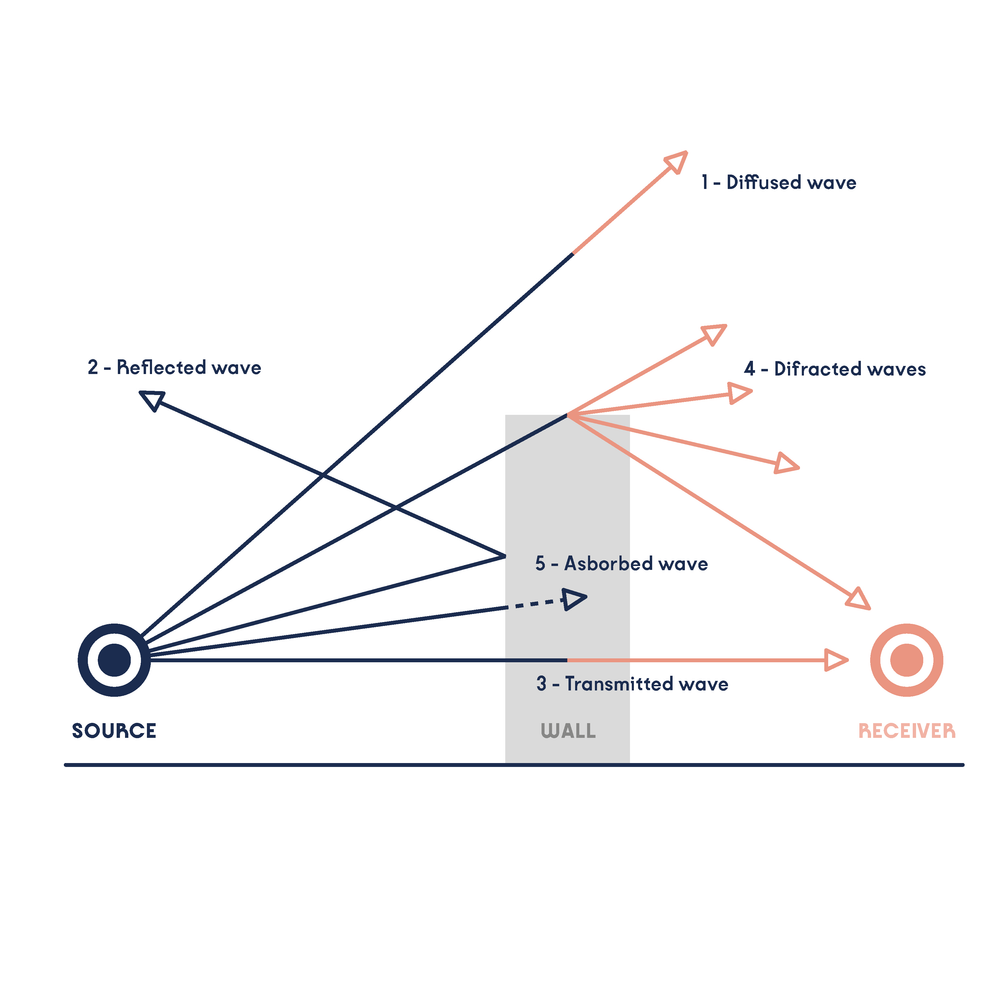
Our tips for a high performing and quiet office
Top 5 tips for a quiet office
Improve wall soundproofing
Noise tends to rise, and ceiling reverberation amplifies it. It is therefore beneficial to install a suspended ceiling to trap sound in the empty space created. Alternatively, installing acoustic panels made from sound-absorbing materials is a more stylish solution.
The floor is responsible for impact and footstep sound. Soft (fibrous) materials such as carpets or rugs tend to be excellent insulators due to their sound absorbing properties.
If poorly insulated, walls transmit airborne sound and cause impact sound. Brick or concrete walls are effective sound insulators because of their density.
However, drywall is more common and may need to be doubled with a soundproofing material such as rock wool. In the absence of sufficient insulation, acoustic wall panels can be installed, an aesthetic but imperfect solution.
Segment the workspace
Open offices and hybrid working arrangements are growing in popularity, but can lead to increased noise levels with shared desks and video conferencing.
It is therefore necessary to rethink the organisation of the workspace and segment it according to needs:
- An open central area to encourage interaction.
- A variety of comfortable spaces for breaks, discussions or autonomous work.
- Dedicated meeting rooms for formal exchanges.
- Soundproof pods for phone calls and videoconferencing.
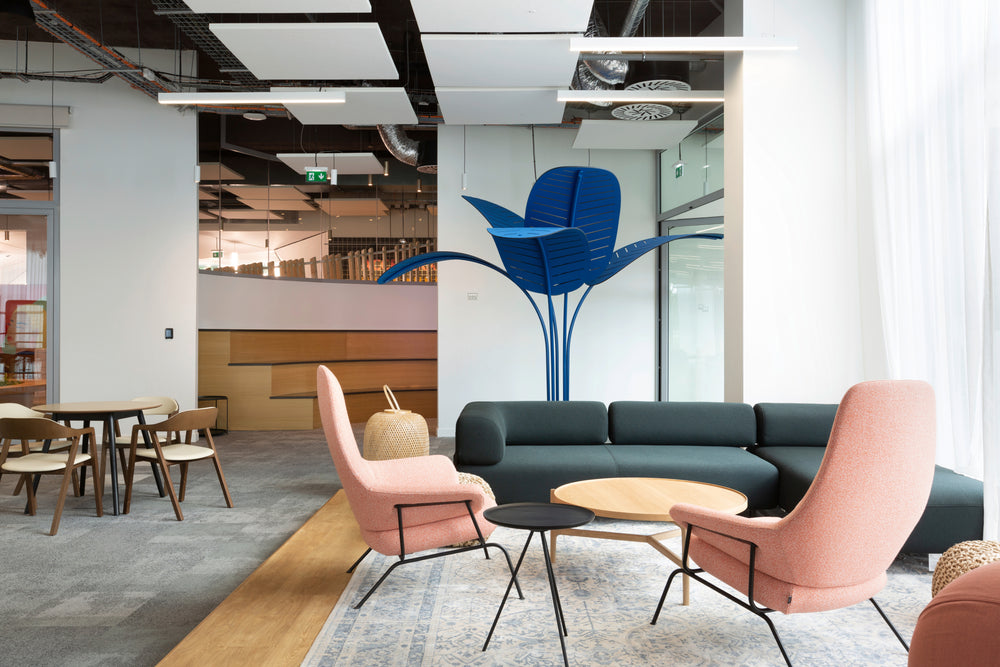
Furnish your space with acoustic furniture
Acoustic partitions allow you to create a separation between different areas of your office while limiting noise. It is an easy-to-assemble piece of furniture that can be moved if the layout changes. Acoustic screens can also be effective in small areas. The acoustic screen is made of insulating materials and isolates workstations on the same table in the open space.
To be effective, it must be high enough to hide the face, which is impractical for visibility.
The soundproof pod is a dedicated space for making calls without disturbing colleagues or for holding confidential conversations. There is a new generation of acoustic furniture, such as cabinets or armchairs, that can be used to support the soundproofing.
Note that a clean and empty room will be noisier because non-metallic furniture passively absorbs sound waves; dress up the room!
Raise the awareness of your teams
Of course, all these measures are of little value if they are not used.
Each team and department has a different relationship with noise; involve your teams in improving their working conditions by drawing up a noise management charter of good practice. This will ensure their commitment and avoid internal tensions over noise levels.
Finally, as with any change management, rely on managers to implement these new rules of etiquette.
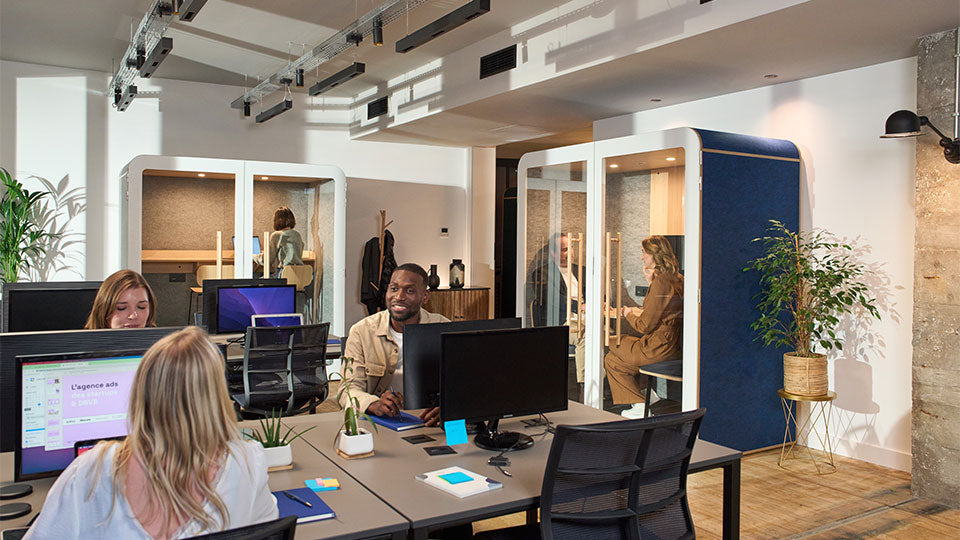
Focus your efforts on the sources of noise
To tackle the noise problem, it is more effective to isolate the noise at its source, rather than providing everyone with earplugs. Some recurring noises are easy to identify and tackling them will have the greatest impact on your team's comfort:
- Traffic areas, such as entrances or corridors, tend to concentrate noise. Prioritize the installation of furniture and acoustic panels in these areas.
- Noisy equipment, such as printers and scanners, can be placed away from workstations. You can also isolate them with panels or partitions.
- Provide specific equipment for your sales team to limit noise related to calls.
Insulation techniques developed for our pods
Spring-Mass Principle
The effectiveness of Work With Island's soundproof pods is based on the spring-mass principle, a technique used in the manufacture of our walls.
This method uses dense materials to block sound and flexible materials to absorb it. On the inside, recycled cotton acts as a damper by absorbing and dispersing vibrations, while on the outside the thick layer of wood blocks them.
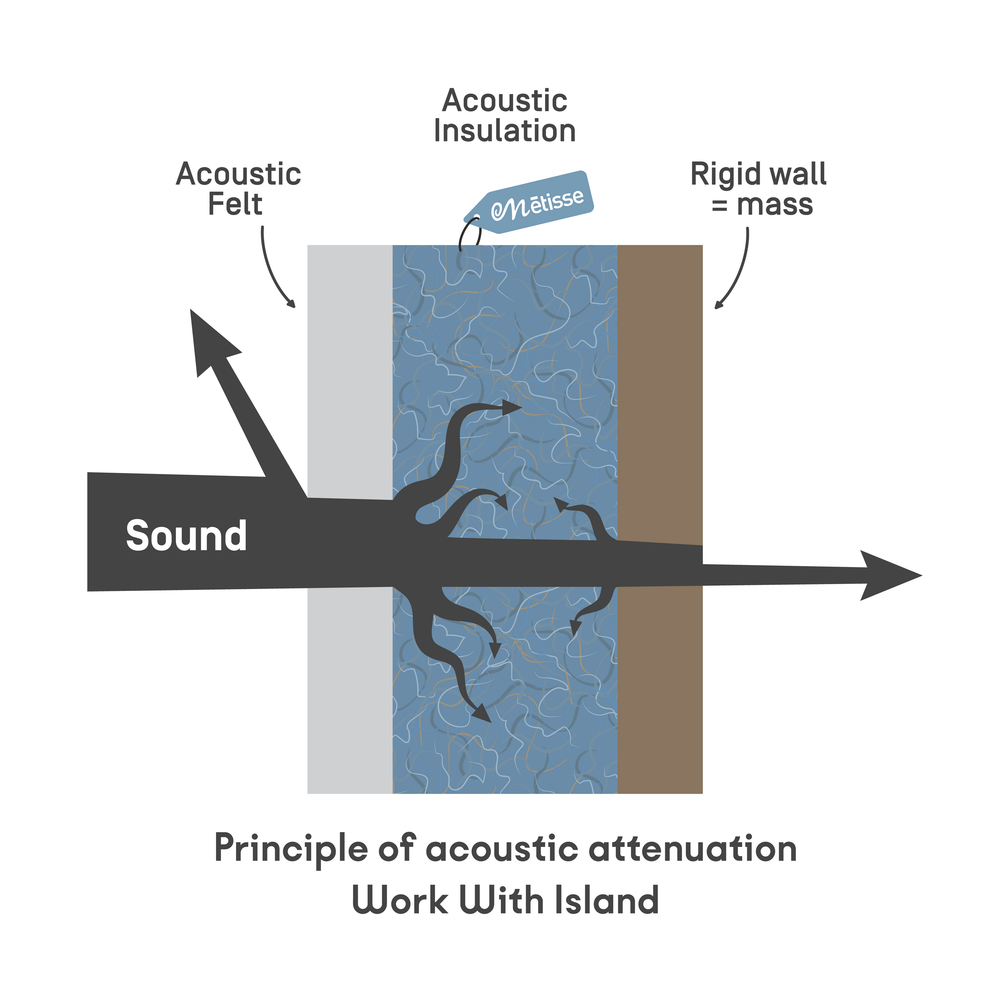
Sealing the whole structure
Where air goes, noise goes. That is why our doors are tightly sealed by a system of magnets and gaskets. The sealing materials have been carefully selected to ensure a complete seal, preventing noise from escaping while still allowing you to open the door easily.
Venting designed for soundproofing and comfort
Even with the door firmly closed, our pods are well ventilated. Air is drawn through the roof of the pod in a tortuous path to prevent sound from escaping directly.
Designed by our engineers, this system uses quiet fans to ensure constant air renewal while maintaining maximum acoustic insulation.
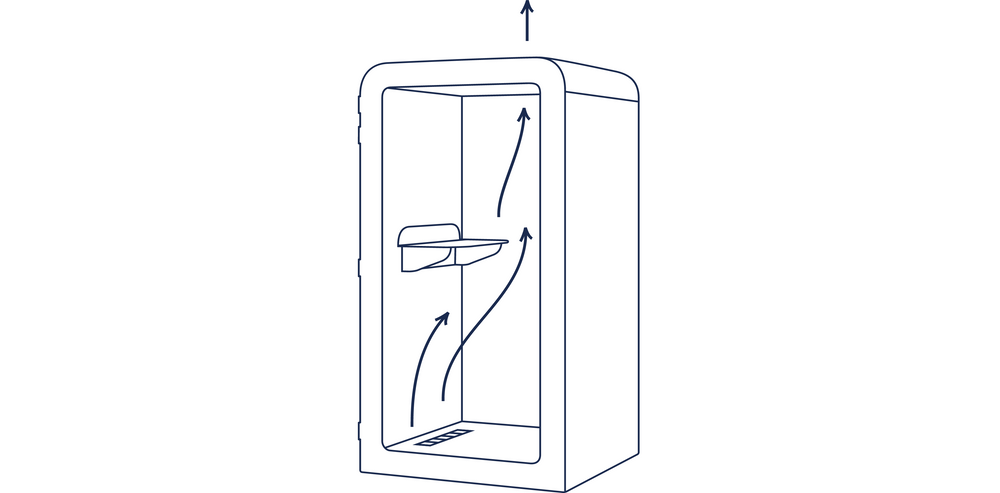
Optimised acoustic insulation
Our pods are designed with optimised insulation to ensure exceptional sound quality inside. Particular attention has been paid to the absence of reverberation, ensuring a quiet environment that is conducive to concentration.
The materials used are carefully selected to minimise any echo effects and ensure optimal comfort during your calls and video conferences.
Laboratory-certified performance with ISO 23351-1 standard
Every Work With Island pod is thoroughly tested to the ISO 23351-1 standard, which is specifically designed to evaluate the performance of soundproof pods.
These tests ensure that each pod meets the latest international standards, guaranteeing product reliability and quality. The SOLO pod has been certified with a sound reduction of 28.3 dB.


